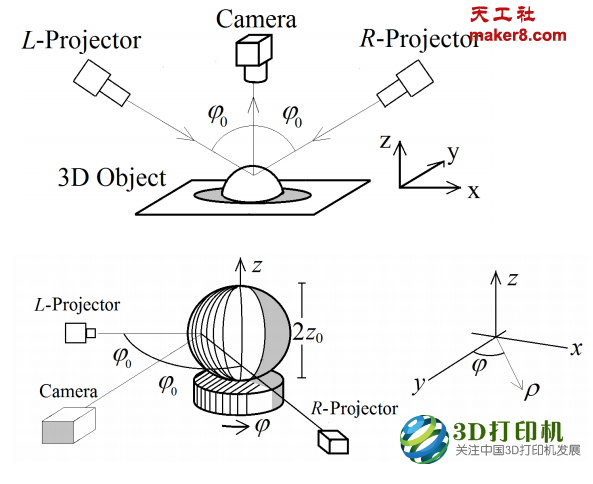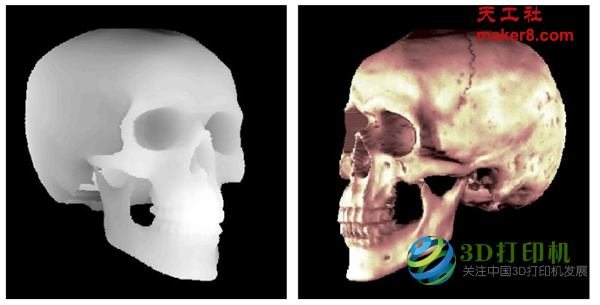If you want to use a 3D printer to copy an existing object, the most common method is to first perform a 3D scan, then generate a 3D model based on the scan results, and then print it out. However, when you use a 3D scanner to scan objects into your computer, you may need to modify the resulting 3D model, unless you are using expensive, high-quality equipment.
A few days ago, researchers at Mexico's Centro de Investigaciones en Optica (CIO) seemed to have found a better solution. The solution was cheaper and the result was more accurate.
This technique is called "Co-phased 360-degree profilometry" and requires five necessary conditions: one camera, two light projectors, subjects (fixed position and able 360 degree rotation), there is also a computer. The principle of the technique comes from a classic research paper published by Takeda et al. in 1982. The method found in this paper can be used to construct 3D models that resemble cylindrical solids, but it cannot be used to construct non-cylinders or to have more detailed objects. 3D model. The method provided in the paper is to use a light projector to project a parallel line onto an object, then photograph it with a camera, analyze the curved parallel bands of light by a computer, and create a 3D model of it. The method cannot do 3D modeling of most objects, especially objects with irregular surfaces.

Digitization of plastic skulls irradiated from left and right angles (Source: arxiv.org)
The methods used by CIO researchers improved this by placing two projectors at the same angle on both sides of the camera. The camera shoots continuously, using a projector to project the object first, and then another projector. Doing the same thing, then scanning the object slightly rotates, and the above process occurs again until the camera shoots enough objects to complete the modeling. The computer then analyzes the captured images based on complex calculation formulas to form a complete 3D model. .

Based on published research results, the team successfully performed 3D modeling for a fairly complex plastic skull.

The left side shows a three-dimensional gray rendering of the plastic skull. The figure on the right shows a perspective view of another skull superimposed by a large number of stripes. (Source: http://arxiv.org/)
According to the description above, we can see that, in fact, this modeling technique used hardware is very simple, the key lies in the correct software algorithms, which develop cheaper, practical 3D modeling device for us to open the door to . It may not take much time, and cheaper, more convenient, and more powerful 3D scanning devices will appear before people.
Members of the technology R&D team include: Manuel Servin, Guillermo Garnica and JM Padilla.
(Editor)